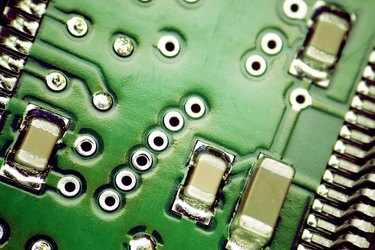
In electronics, many components are used to make a circuit function as desired. Among these components are resistors, which come in several types. Ohmic resistors are those that obey Ohm's Law. Devices other than resistors also obey Ohm's Law and can also be called ohmic.
What Makes a Resistor Ohmic?
Video of the Day
An ohmic resistor is made ohmic because its function follows Ohm's law. Ohm's law essentially says that current is equal to voltage divided by resistance. Additionally, resistance is equal to voltage divided by current, and voltage is equal to current times resistance. Therefore, in a circuit, if a resistor's resistance is equal to voltage divided by current, the resistor is ohmic.
Video of the Day
Functions of an Ohmic Resistor
The ohmic resistor functions to lower the current in a circuit. Ohmic resistors are generally impervious to the effects of temperature, whereas non-ohmic resistors may function entirely on the basis of temperature or light in the vicinity of the circuit.
Applications of an Ohmic Resistor
Ohmic resistors are used in most cases where a standard resistor is required in a circuit. For example, if you wanted to power a one-ampere LED in a circuit running on two amperes, you would use an ohmic resistor.
Other Ohmic and non-Ohmic Devices
Other ohmic devices -- or devices that obey Ohm's law -- include ohmic wires, which have a constant resistance, such as ohmic resistors. Non-ohmic devices include capacitors, diodes and many conductors.